korbo.com
Genealogical pages
Lock and Dam #3 on
the Green River at Rochester (KY)
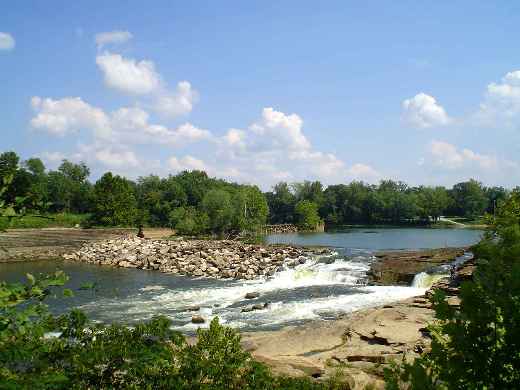
Remains of Lock & Dam
#3 at Rochester, KY
I wonder what this view
would have looked like when everything was in full operation.
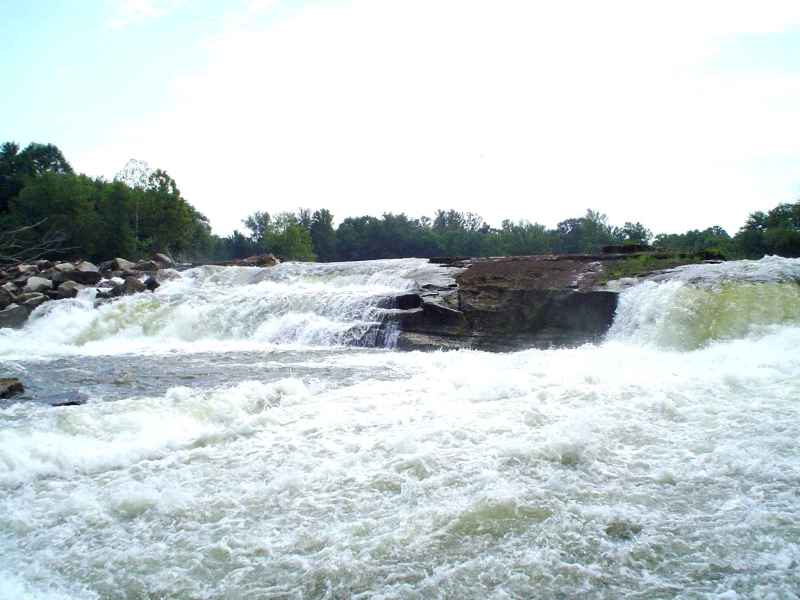
It is not too hard to imagine
a stepped dam here.
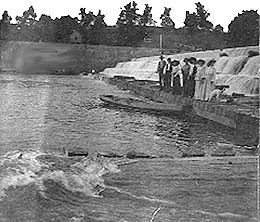
Old photo of Lock &
Dam #5 near Glenmore, KY
Was Dam #3 always a rubble
construction, or was it a rock or concrete stair-step?
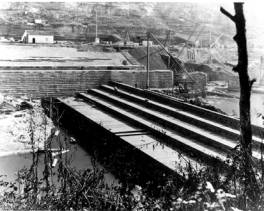
Built like this? No.
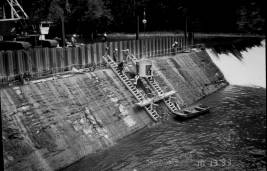
Or a combination construction
like this? No.
ANSWER: It was
constructed in ca. 1834 as a rock-filled timber-crib dam
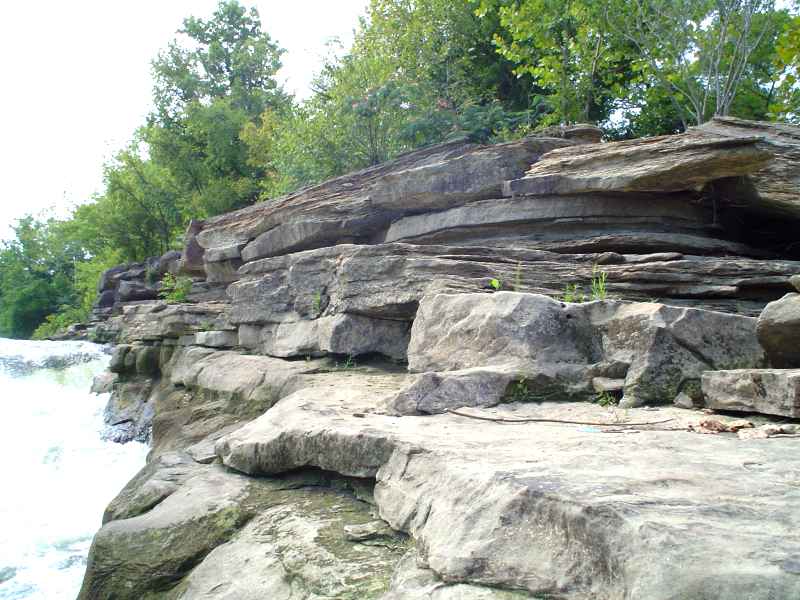
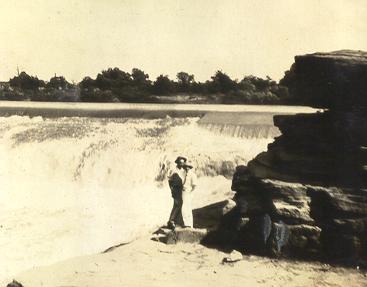
Are these rocky ledges (L)
the present-day remains seen in this old photo (R) near the dam?
Yes.
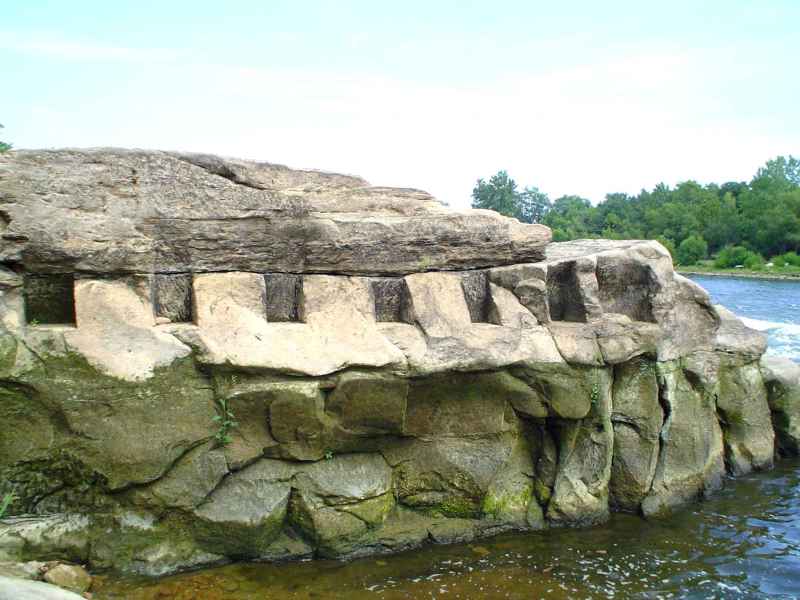
There are remains of old
construction.
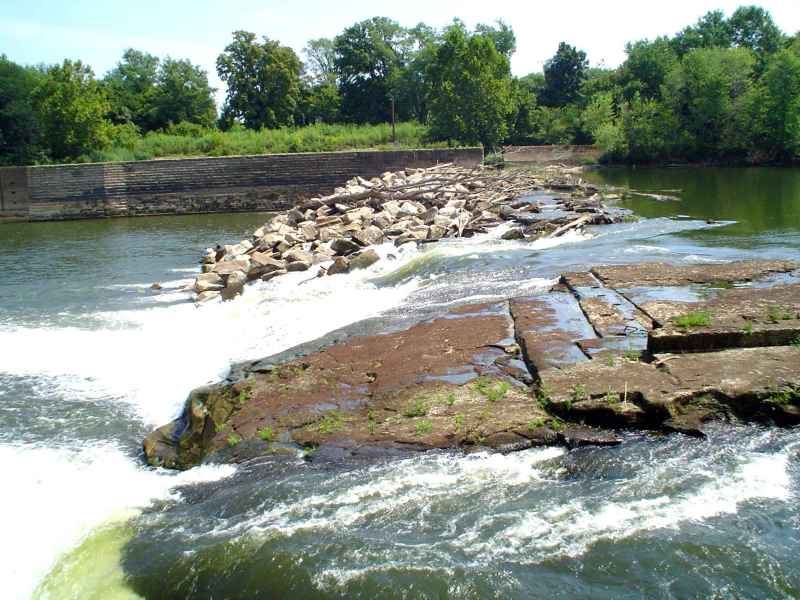
What used to be here? Lumber
mill on Rochester side of the river.
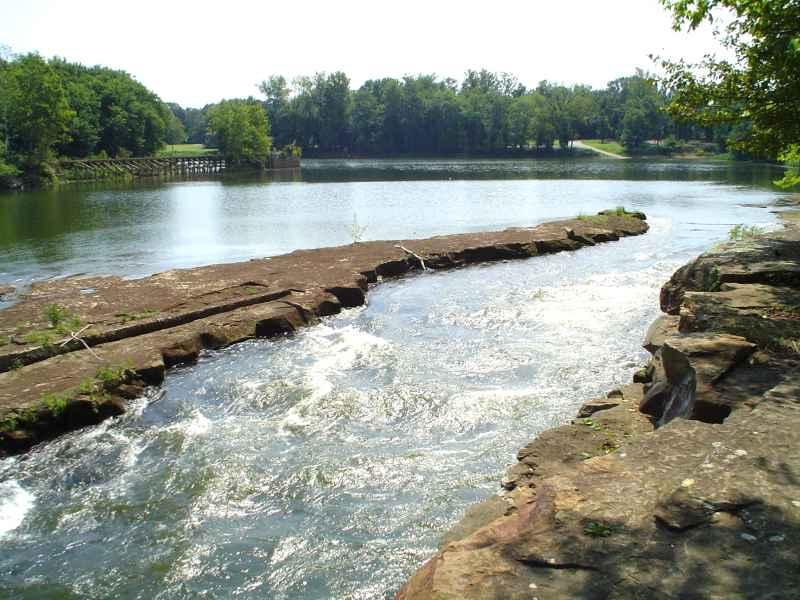
Was this channel cut into
the old dam's foundation? No.
The channel was the old
mill race (it diverted water power for use by the mill).
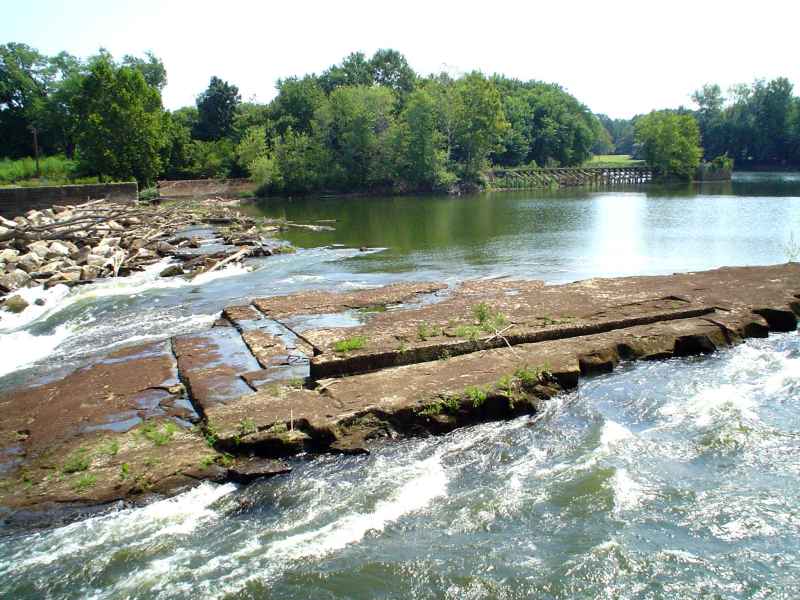
Was an earlier construction
jack-hammered into the rubble used for the remaining dam?
No. The foundation
lines seen in this view pertained to the old mill building.
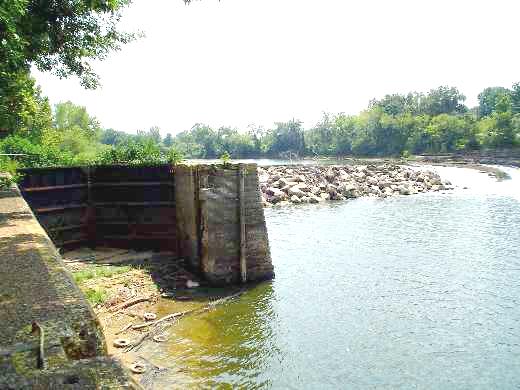
Was Lock and Dam #3 ...
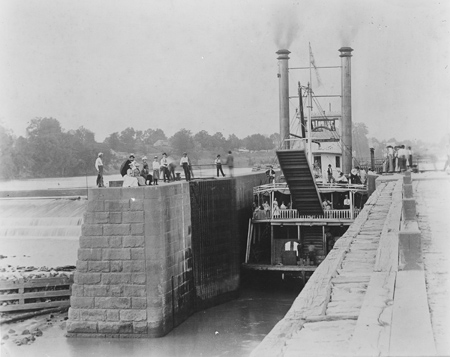
... similar to #2 (above)?
Yes, very much so.
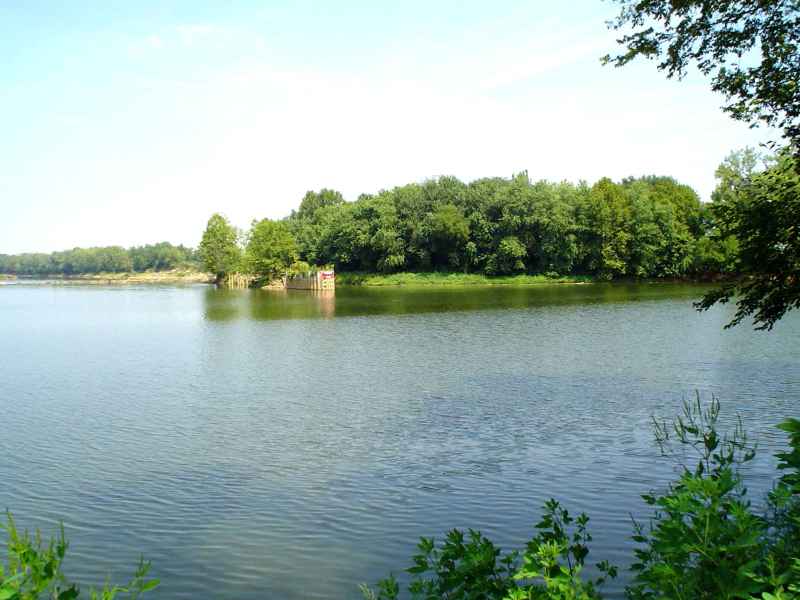
View from the bend above
Lock & Dam #3.
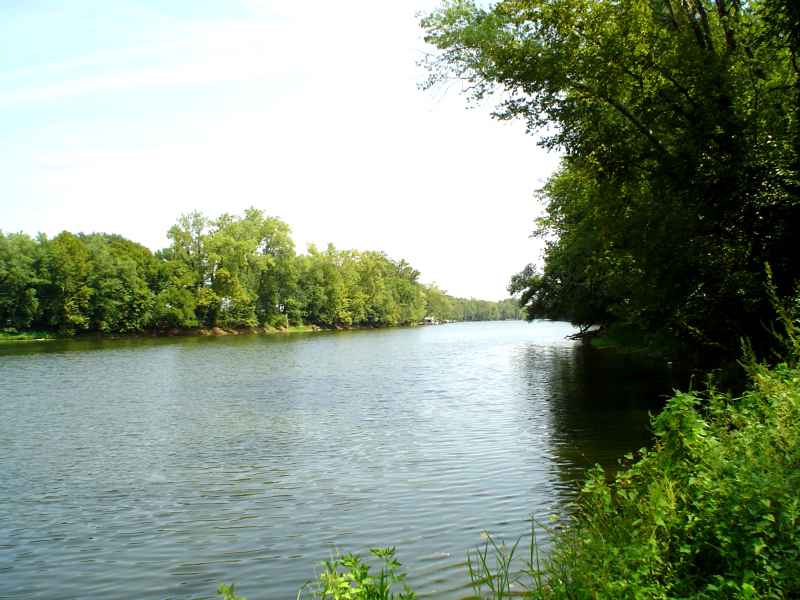
The ferry across US 369
is about a mile up river from the old dam and lock.
Brief History
of the Locks and Dams on Green River
Sources:
1.
Mahrer, D.L., The Green, Rough, and Barren Rivers, © D.L. Mahrer
1969, (K. 557.69 Mah)
2.
USACE, Louisville District, Navigation Disposition Study, Vol. 1,
June 2001
3.
Interview with Ernest Fulkerson, Ohio County Historical Society, August
2005
4.
Research assistance from Wanda Fulkerson, Central City Library, September
2005
In
order to make the river navigable for commercial purposes, a set of 6 locks
and dams were constructed on Green River beginning in about 1838:
-
L&D
#1 at Spottsville (KY) - opened 1840 (Hwy 60, around Mile 9 from mouth
of Green on the Ohio River near Henderson)
-
L&D
#2 at Calhoun/Rumsey (Hwys 136 and 81)
-
L&D
#3 at Rochester - opened 1838 (Hwy 369 at point of Muhlenburg/Butler/Ohio
counties)
-
L&D
#4 at Woodbury - opened 1842 (Hwys 70 and 403 in Butler County near Warren
County)
-
L&D
#5 near Glenmore (near Hwy 185 SE of Reedyville)
-
L&D
#6 in Brownsville (Hwy 70, Edmonson County, western edge of Mammoth Cave
National Park)
Early
steamboats were known as "packet boats" or simply "packets"; they were
owned and operated by packet companies, which were the freight handlers
near the turn of the century (from 1800s to 1900s). Keep in mind
that there were few good roads in those days, and movement for commercial
and personal purposes over land was relatively expensive and dangerous
.. not to mention slow. Although the Green River system probably
has wanted for maintenance since construction was first completed, by 1847
five steamboats were making daily trips, for example, between Bowling Green
and Evansville, and the years between 1890 and 1910 were "the most glamorous
and romantic period". In 1905 there were nine packets on the Green
River, and twenty-eight pleasure boats operated on the river and its tributaries.
It is likely that the Green River system provided the only readily available
means of transportation and pleasure during the period. Around 1906
it was possible to leave Calhoun at five in the evening and arrive in Evansville
around daylight.
So
what brought the system to the sad state of repair we see today?
The short answer is it became unprofitable. As other transportation methods
arose in Kentucky, commercial traffic on the Green dwindled. The
big show stopper happened on May 25, 1965. That was when Dam #4 at
Woodbury failed, and the resulting breach severely lowered the water level
up river. With no way to move heavy boats between Lock #4 and Lock#5,
the entire system was effectively crippled. Due to the relative lack
of commercial significance of the system, Dam #4 was never repaired.
Today, boats are still able to lock up and down the river between the mouth
of the Green near Henderson, KY, and Evansville, IN, at Spotsville (#1)
and Calhoun (#2) to just below Rochester, but it is not possible to lock
through Lock #3 because it is completely out of operation .. filled with
sediment, debris, and frank garbage. Nonetheless, the river still
holds plenty of appeal. -Terry Knight
















